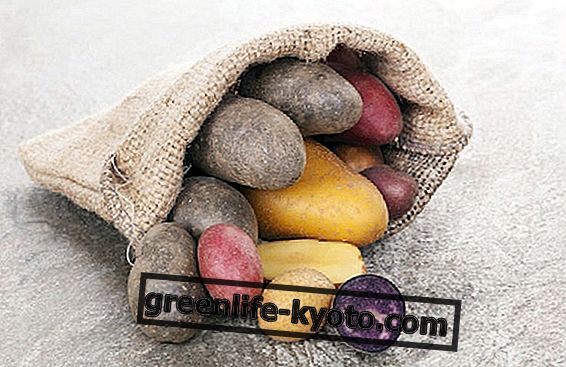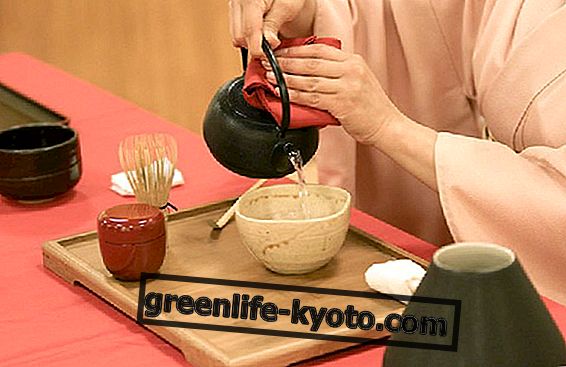Tai chi chuan is a discipline of ancient origins, which approaches the world of martial arts, useful for strengthening the character, tendon and muscle elasticity and improving posture. Let's find out better.

Origins and description of Tai chi chuan
Tai Chi Chuan literally means "Fight of the Great Term" or "Supreme Art of Combat". " Tai Chi" stands for "Great Term" or "Supreme Unity", while "Chuan" means "struggle" and brings to mind the martial origins of this art, characterized by the search for harmony and balance of Yin and Yang in that microcosm which is the human being.
The history of Tai chi chuan is 3 millennia long. A discipline with such a long history undoubtedly carries messages rooted in human history, but at the same time it is intuitive that it has undergone changes during transmission.
This has had repercussions on the relationships between the schools then and it still has today: joining a school rather than another has a significant impact on the execution and movements assimilated by the student and, if the students do not get used to the comparison, it is easy to fall into errors of entrenchment and presumed exclusivity.
The oldest known quotation from Chang San Feng, recognized as a legendary founder, as a martial artist is found in the biography of a certain boxing master who was very famous at the time, Chang Sung-ch'i, who lived in the 16th century in Ning-po. Chang Sung-ch'i claimed to have learned tai chi chuan from an alchemist named Chang San Feng who lived as a hermit on top of the Wu-tang.
During the T'ang dynasty (618-907 AD) it appears that there were 4 distinct schools of martial arts and precarious exercises with similar movements. Hsu Hsun-ping was probably the name of the master of the first school, where movements were taught in 37 positions according to a style inspired by the I ching, according to techniques which for the arms included the Eight Trigrams and for the legs the Five Elements.
According to some, Chang San Feng joined these two schools and created Tai Chi Chuan. Another theory recognizes a village of the Chen family in Honan province as the cradle of tai chi chua; in this village Wang Tsung-yueh arrived, a wanderer and a martial arts scholar, and from the comparison with local techniques the sweet struggle was born. A fourth theory denies the existence of the martial adventurer and attributes to the descendants of the Chen family, during the MIng dynasty, the institution of tai chi chuan.
Many theories, testimonies of meetings and martial exchanges, legends that merge with the data: the gesture and the techniques have passed through all this, modifying themselves.
What is certain is that since 1949 the Chinese have promoted large-scale martial arts and have made efforts to unify the genealogies of each art. The genealogy currently presented recognizes a certain Cheng Wang-t'ing, a pupil of a pupil of Wang Tsung-yeuh as the founder of tai chi chuan.
From the movements invented by Cheng Wang-t'ing, after a few generations, two men drew different techniques: Chen Yu-pun created a new style, based on the concept of spiral to be found in the movements; Chen Ch'ing-p'ing founded a more sophisticated and compact style. In addition to the style of sole prerogative of the Chen family, the Yang style was born, thanks to Grand Master Yang Lu Chan (1799-1872).
In this bifurcation we find a distinction still in force; the main style transmitted today is the Yang, although in the last few years the Chen style has spread, along with the styles developed by Chinese athletic organizations.
Starting around the 1970s, the art of tai chi chuan has spread throughout the world. Today this art is taught not only in schools, many of which often boast of possessing "true art", but also in private circles, multi-purpose gyms, wellness centers. Sometimes these same bodies make use of Chinese teachers from the United States, Taiwan, China, Singapore and Malaysia.
What is Tai Chi Chuan for?
Many are the positives of a constant practice. Among these we list some of them: character enhancement, self-inquiry, tendon and muscle elasticity , breathing lengthening and lung capacity enhancement. Improvement of the general state of posture, work on joint and internal energy connection .
The movement on a single point allows the senses to be opened to the original motor expression and to let the form flow.
One, very recent, published in the journal "American Journal of Health Promotion", conducted by researchers from Arizona, confirms that the practice of Tai Chi is beneficial for the health of the organism and offers psychological benefits by improving the quality of life in general. The study of the effectiveness of Tai Chi in people with rheumatoid arthritis has shown that its practice has a significant benefit for leg and hip movements.
Israeli neurologists and rehabilitators have experienced the effects of Tai Chi on people suffering from stroke, recording in practitioners a marked improvement in the recovery of general functions and social relations.
Here is the interview with maestro Gianfranco Pace on Tai chi chuan the spiral movement, the natural change
A typical tai chi chuan lesson
The Tai chi chuan master introduces the student to the practice of the "supreme art of combat". The teaching that it conveys does not take place only on a physical level. The Master transmits the technique, the form, the breathing, the Tui shou (Thrust with the hands), the chi kung (qi gong) and the martial applications and, at the same time, helps the student to transpose these lessons into everyday life, the teaches how to look at things in the light of flowing. Stretching exercises, meditations, work on energy and repetitions of forms are the main practices.
In some schools, students attending tai chi chuan courses must follow the rule of wearing traditional Chinese training costumes: jacket fastened with frogs, mandarin collar, wide pants that allow freedom of movement and shoes that give the foot a flat surface to rest on. Usually in Italy each school prints specific t-shirts for its students, with the recognition symbol.
The lesson varies depending on the style: for the Chen there are accelerations, explosive gestures (which are however studied only at an already advanced stage of the practice), while for the Yang, they include spherical movements, slow and compact steps. Once the style most suited to the person is recognized, the aspiring tai chi chuan master will have a long process before him, which is reflected in the vastness of the techniques and the degree of depth.
Who can operate in Italy
Among amateur spotlight associations affiliated to tai chi sporting institutions or international schools, the pool of teachers is very wide, throughout the Italian territory. A Buddhist proverb reads: When the pupil is ready, the Master appears .
We advise you to check if the M ° really has a practice of at least ten years in a delicate discipline like this inner art . Not bad if the Master also has basic notions of joint physiology and movement anatomy.













